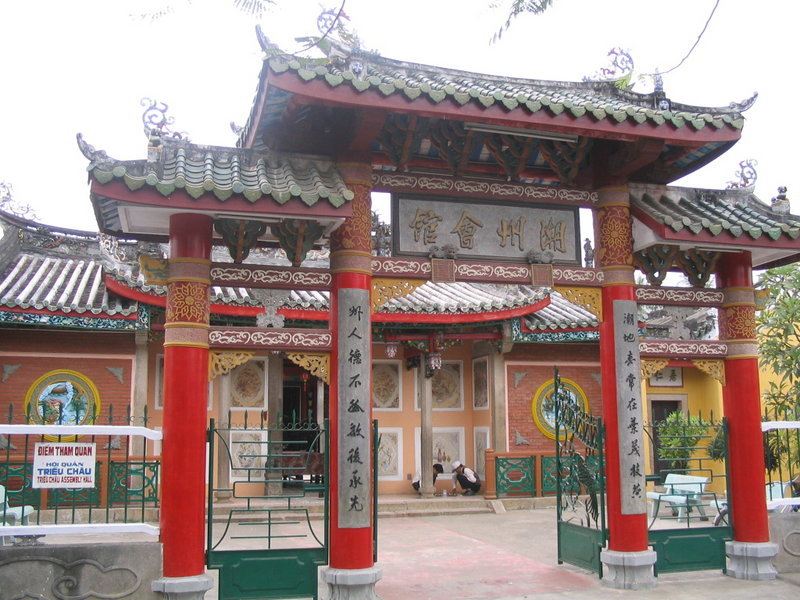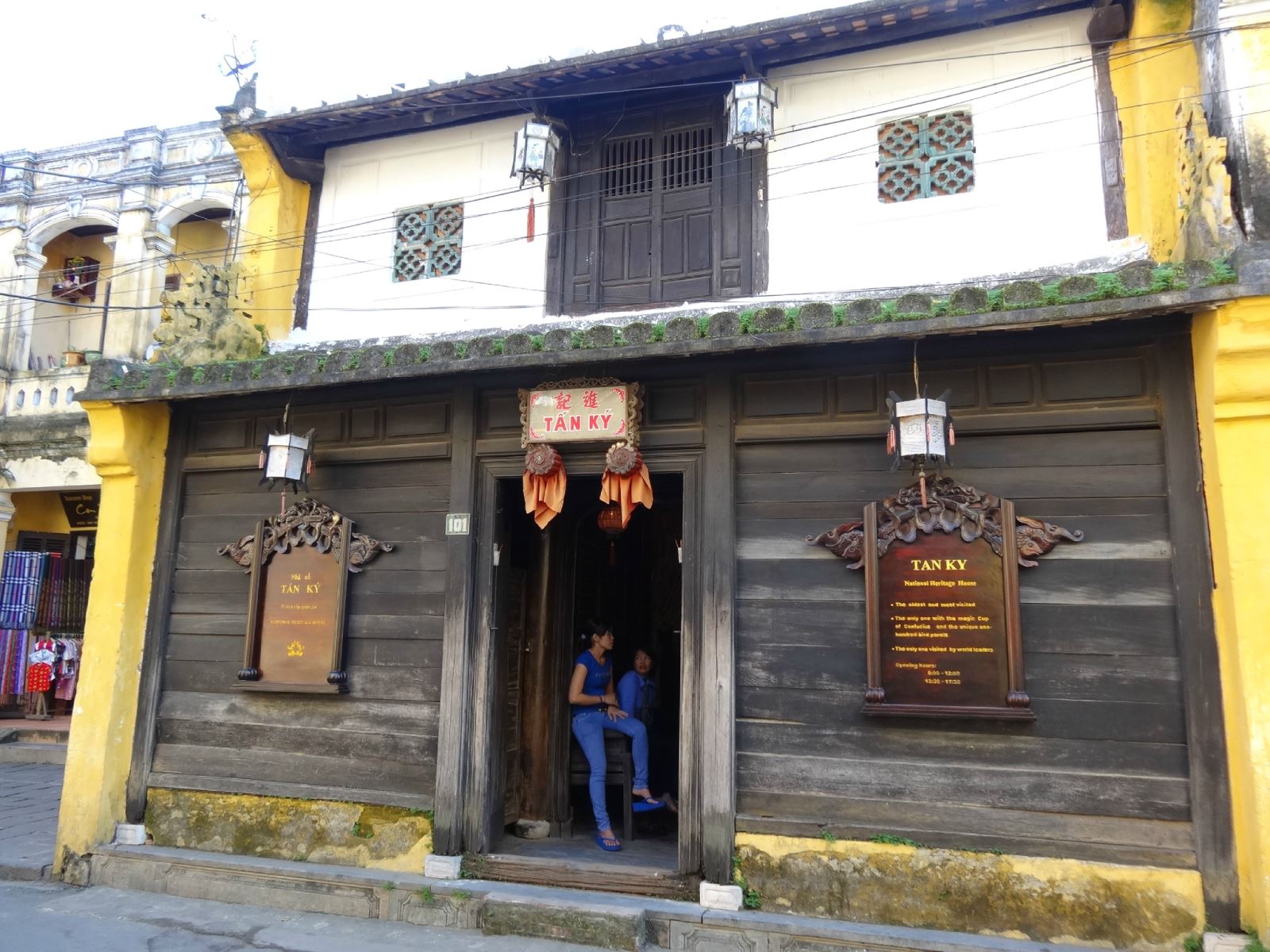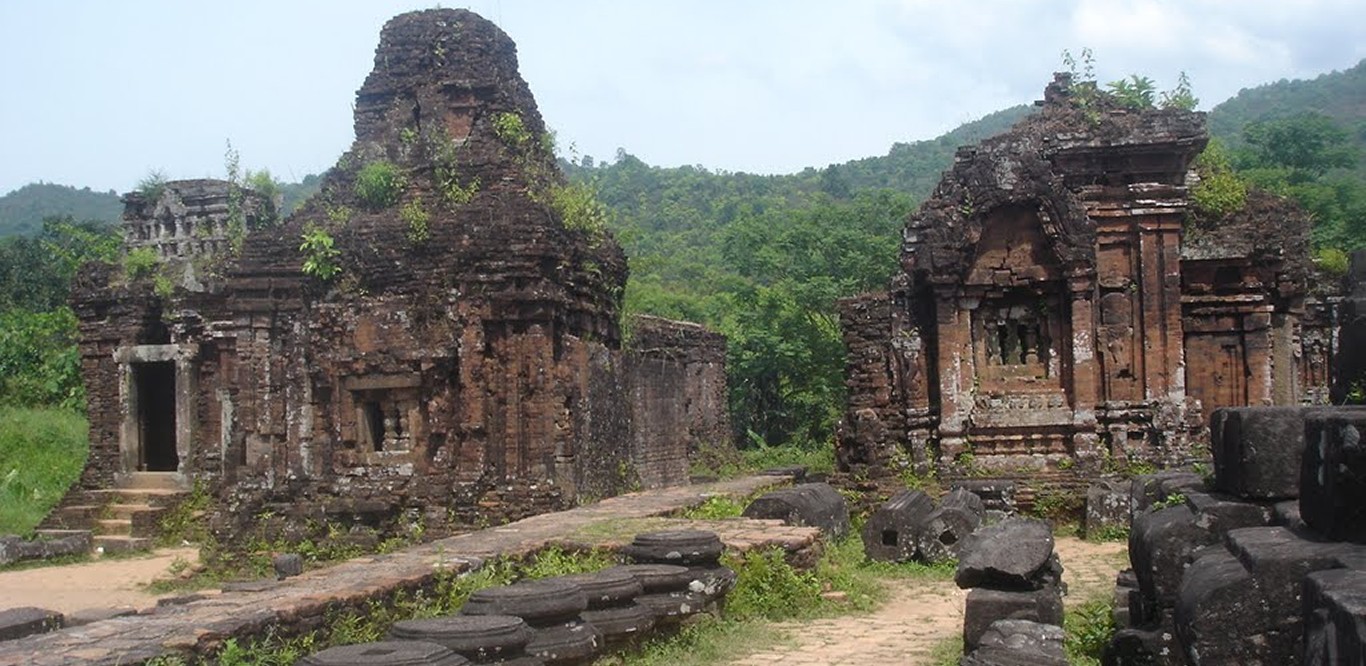Despite the passing of 200 years and the ravages of weather and war, the centre of Hoi An remains much the same as it was in its heyday. A walking tour is the best way to see the wooden-fronted houses that once belonged to the town’s prosperous merchants, the Japanese-covered Bridge and the wonderful market. Hoi An is one of the best places in Vietnam to shop for souvenirs at bargain prices including silk, handicrafts, antiques and paintings.
Five kilometers from the centre of town is Cua Dai Beach, popular with both locals and visitors alike, for its sandy beach, warm sea and seafood stalls. Hoi An is known throughout Vietnam for its excellent seafood and it also boasts its own unique dishes such as Cao Lau, a delicious combination of noodles, pork, bean sprouts, mint and croutons.
Inland and a half-day trip from Hoi An is My Son, where the capital of the once great Champa Kingdom stood. The Chams, Hindus originally from India, were the rulers of large areas of central Vietnam between the 2nd and 15th centuries. The Cham Museum, housed in a classical French colonial building in Danang, has the finest collection of Cham sculpture in the world, much of it originating from the My Son site.
Right on Danang’s doorstep is Non Nuoc Beach with its miles of golden sand beaches and home to a luxurious beach resort complex. Another popular site in the Danang area is the Marble Mountains, five sacred marble and limestone hills. Many shrines and temples have been constructed over the centuries both on the hillsides and in the spectacular natural caves concealed within the hills.
Some famous places for Sightseeing in Hoi An

Japanese Covered Bridge – Built in 1593 by the Japanese to link their quarter of town to the Chinese quarter. At one end of the structure are statues of two dogs and at the other, statues of two monkeys – perhaps indicating the years when the bridge’s construction was begun and completed. There is a small temple on the northern side of the bridge which is dedicated to Tran Vo Bac De – God controls wind and rain.

Chua Ong Pagoda – Founded in 1653 by the Chinese community, this temple is dedicated to Quan Cong, a revered general of the Chinese Han dynasty. Come here to contemplate life the bright-red interior of the temple or while watching the small of fish that happily dart around in the pond out front. The carp, symbolic of patience in Chinese mythology, is displayed throughout.

Tan Ky ancestral house – One of the oldest private houses in Hoi An, this structure has remained largely unchanged in the 200 years since it was built. Seven generations of the Tan Ky family have lived here. The house incorporates both Chinese and Japanese styles. Japanese elements include the crab shell-shaped ceiling supported by three beams in the living room. Chinese poems written in mother-of-pearl are hanging from a number of the columns that hold up the roof.
.jpg)
Chinese Assembly Hall – Built as a meeting place for Chinese residents of Hoi An, this hall later became a temple dedicated to the Fujian goddess of the sea and protector of fishermen, Thien Hau. It’s a reminder of how important fishing and trading were to the Chinese community in Hoi An. This temple is architecturally unique with its artistic ornaments and beautiful statues. The Chinese architectural style combined with Vietnamese workmanship has enriched it with Hoi An's cultural character.

My Son Sanctuary – Former temples and towers dedicated to kings and divinities, particularly Shiva, who was considered the founder of the Kingdom of Champa. Construction first began in the 4th century under the order of the Cham king Bhadresvara and continued until the 13th century. Though less imposing than the Angkor in Cambodia and less diversified than the Pagan site in Myanmar, My Son is unique of its kind in Southeast Asia. With its great value, in December 1999, the My Son Sanctuary has been recognized as a World Cultural Heritage Site by UNESCO.









